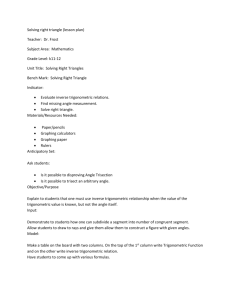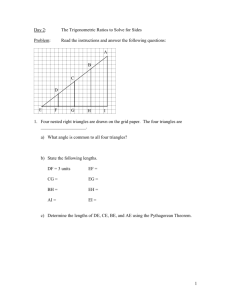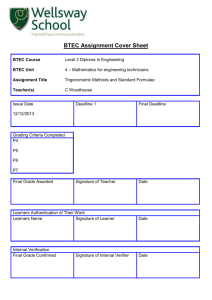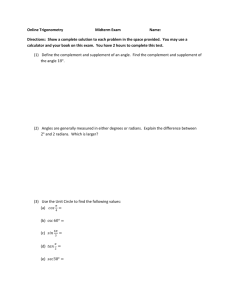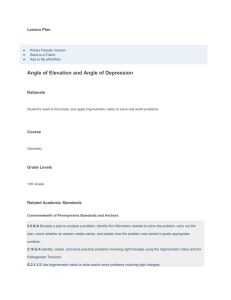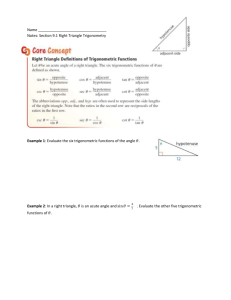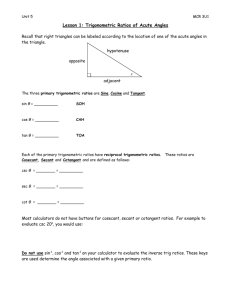Trigonometry and 3-Space Evaluating Trigonometric Ratios for any
advertisement
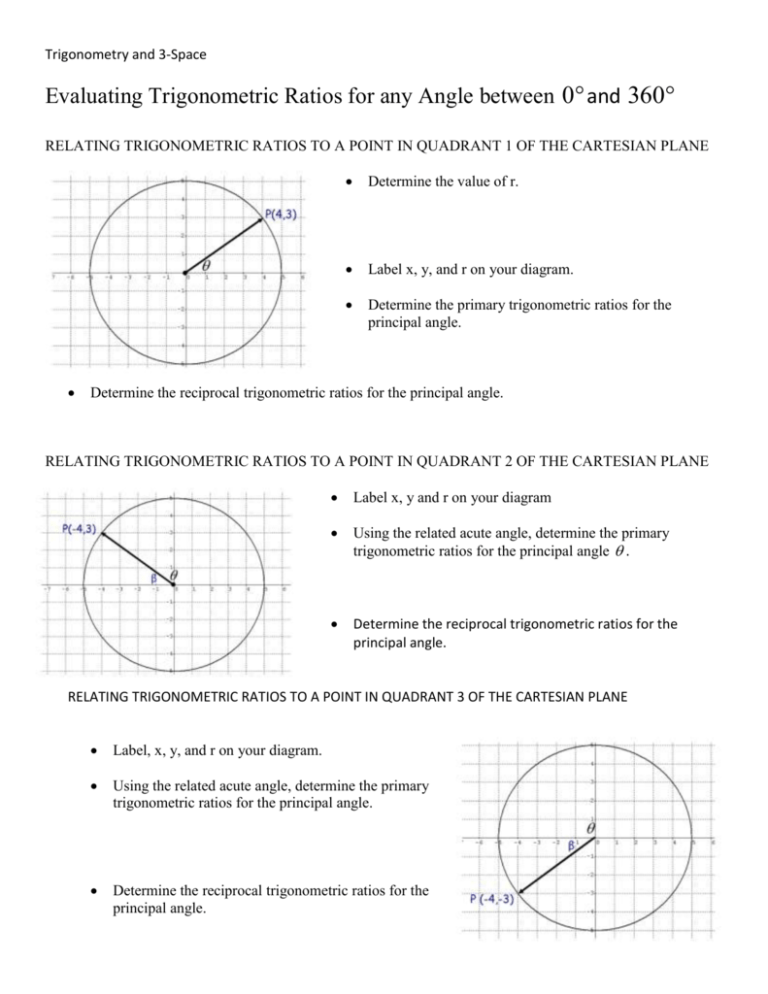
Trigonometry and 3-Space Evaluating Trigonometric Ratios for any Angle between 0 and 360 RELATING TRIGONOMETRIC RATIOS TO A POINT IN QUADRANT 1 OF THE CARTESIAN PLANE Determine the value of r. Label x, y, and r on your diagram. Determine the primary trigonometric ratios for the principal angle. Determine the reciprocal trigonometric ratios for the principal angle. RELATING TRIGONOMETRIC RATIOS TO A POINT IN QUADRANT 2 OF THE CARTESIAN PLANE Label x, y and r on your diagram Using the related acute angle, determine the primary trigonometric ratios for the principal angle . Determine the reciprocal trigonometric ratios for the principal angle. RELATING TRIGONOMETRIC RATIOS TO A POINT IN QUADRANT 3 OF THE CARTESIAN PLANE Label, x, y, and r on your diagram. Using the related acute angle, determine the primary trigonometric ratios for the principal angle. Determine the reciprocal trigonometric ratios for the principal angle. Trigonometry and 3-Space RELATING TRIGONOMETRIC RATIOS TO A POINT IN QUADRANT 4 OF THE CARTESIAN PLANE Label x, y, and r. Using the related acute angle, determine the primary trigonometric ratios for the principal angle. Determine the reciprocal trigonometric ratios for the principal angle. CONCLUSIONS: Record the sign ( + or - ) for each of the primary trigonometric ratios in each quadrant. In which quadrant(s) is sine positive? In which quadrant(s) is cosine positive? In which quadrant(s) is tangent positive? For any principal angle greater than 90 , the values of the primary trigonometric ratios are either the same as, or the negatives of, the ratios for the related acute angle. These relationships are based on angles in standard position in the Cartesian plane and depend on the quadrant in which the terminal arm of the angle lies. For any point P (x,y) in the Cartesian plane, the trigonometric ratios for angles in standard position can be expressed in terms of x, y and r. y x y sin cos tan r r x Trigonometry and 3-Space The principal angle and the related acute angle are the same angle in quadrant 1. If is an acute angle in standard position, then the terminal arm of the principal angle (180 ) lies in quadrant 2. If is an acute angle in standard position, then the terminal arm of the principal angle, (180 ) lies in quadrant 3. If is an acute angle in standard position, then the terminal arm of the principal angle, (360 ) lies in quadrant 4.
